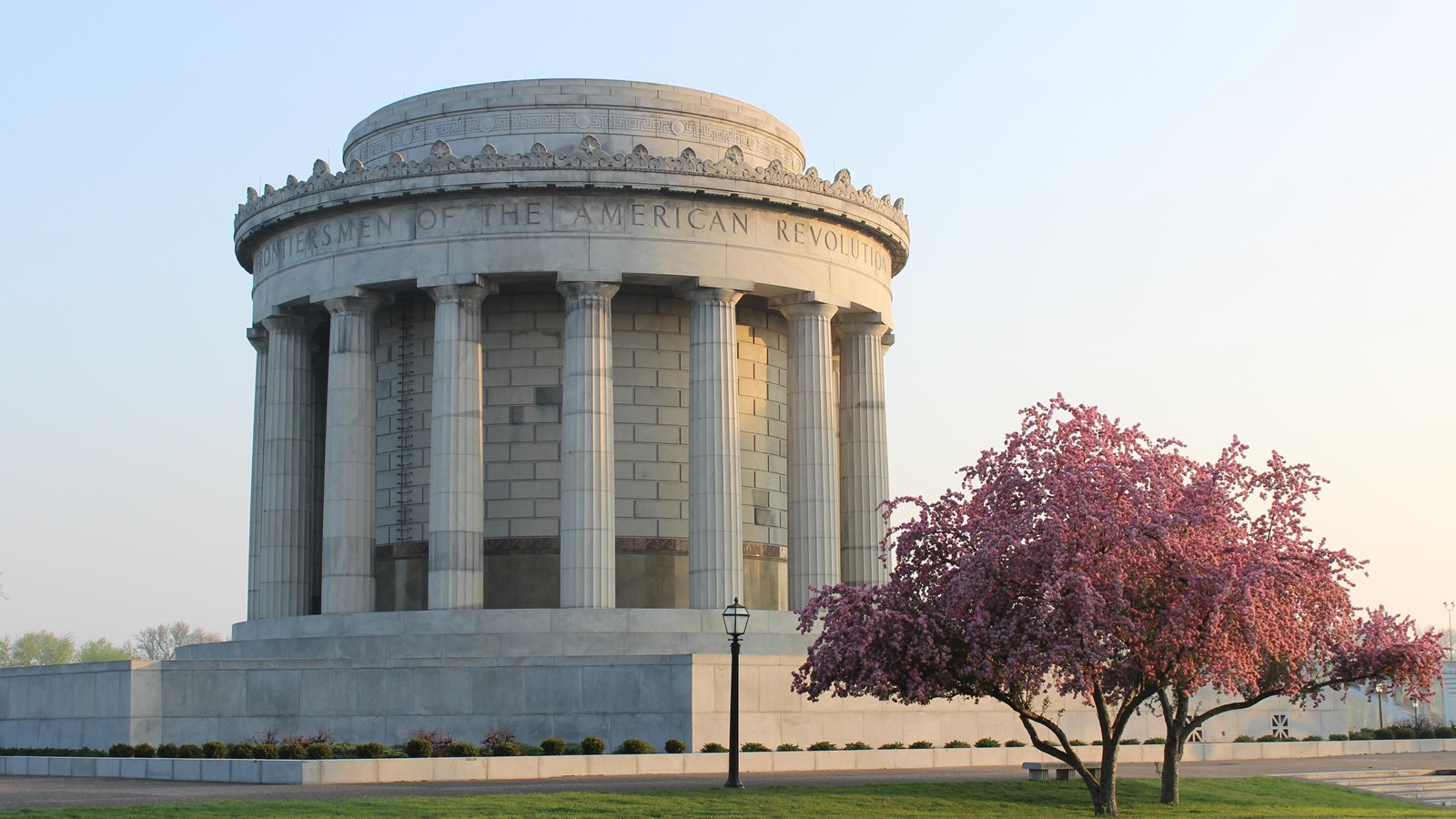Last updated: June 19, 2024
Place
George Rogers Clark National Historical Park

NPS Photo
Audio Description, Braille, Captioned Media, Information, Information - Maps Available, Information - Ranger/Staff Member Present, Junior Ranger Booklet Available, Parking - Auto, Restroom, Restroom - Accessible, Wheelchair Accessible, Wheelchairs Available
In the midst of the American Revolution, George Rogers Clark was sent from Virginia to lead an expedition against the British in the Northwest frontier. Clark's success in capturing British forts in the Ohio and Mississippi River valleys in 1778 and 1779 allowed the Americans to claim territories that would eventually become the states of Ohio, Illinois, Indiana, Michigan, and Wisconsin.
The Treaty of Paris ended the Revolutionary War in 1783, and the military victories of George Rogers Clark significantly weakened British claims to the Northwest Territory. The British gave up their claims to the Old Northwest, though they did not evacuate all of their forts in the territory as dictated by the treaty.
By 1812, some twenty-nine years later, American settlers still found British forts on American claims, and accused the remaining British of inciting Native tribes to violently resist American expansion. For some Americans, a new war on the Western frontier seemed necessary to secure the claims first asserted by Clark.
